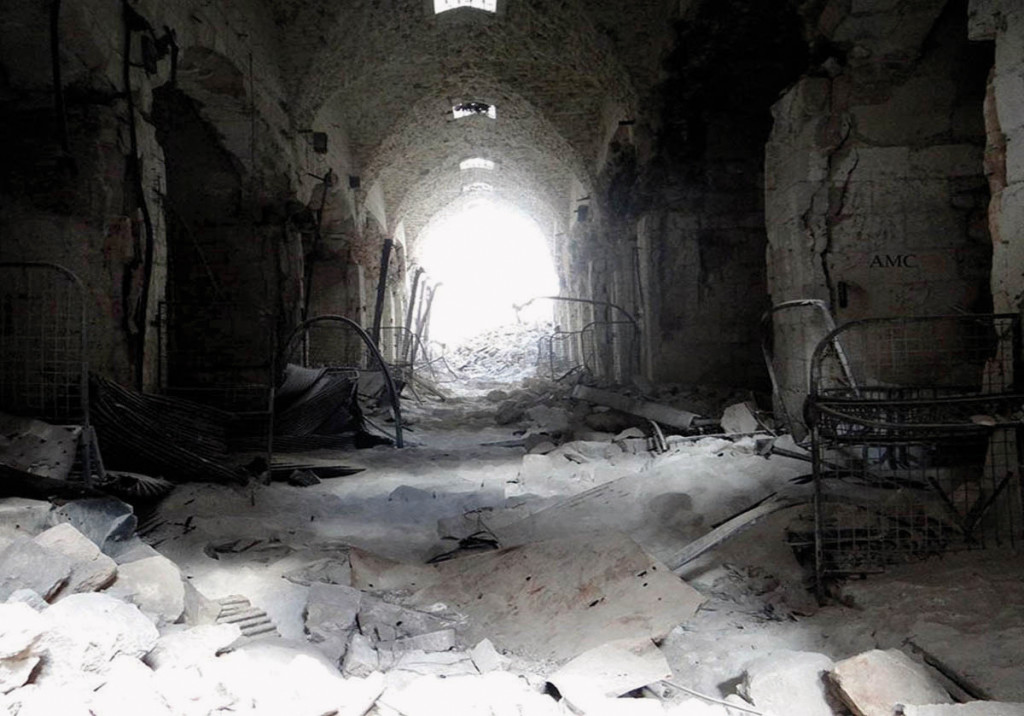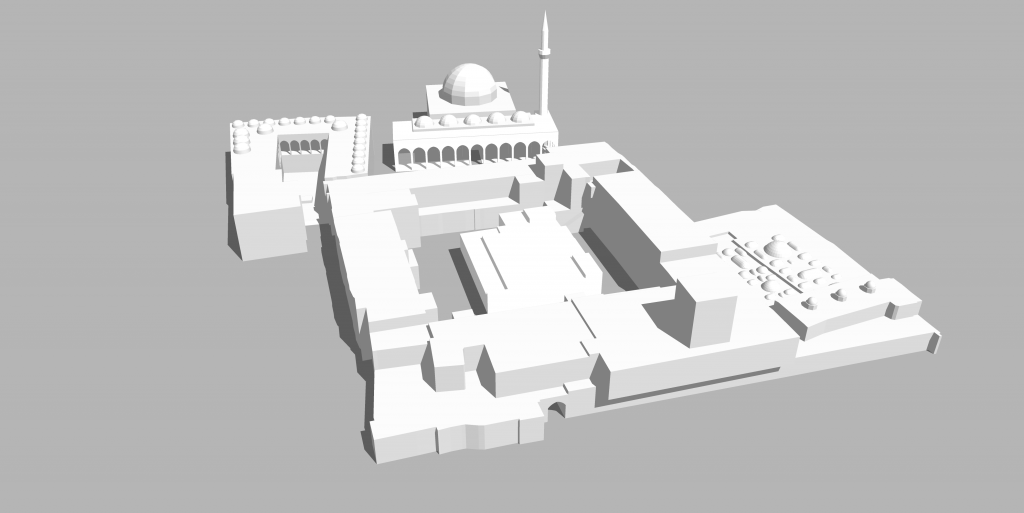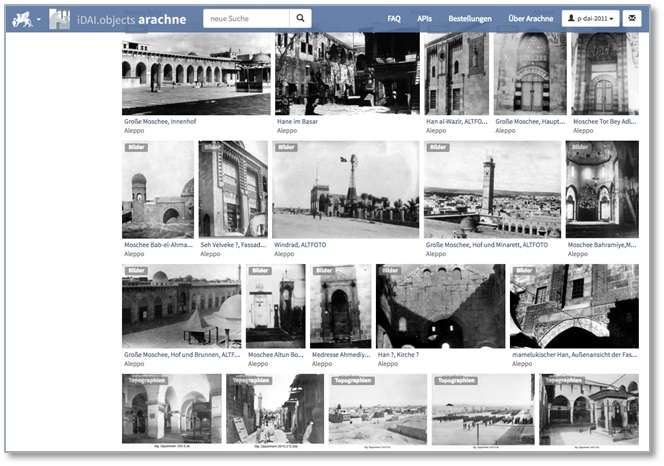Benjamin Ducke & Ralf Bodenstein, DAI, Berlin | September 04, 2017 | 16 pm
Armed conflicts dramatically expose the vulnerability of our built cultural heritage. Presently, wars in the Near and Middle East, through „collateral damage“, looting as well as targeted destruction, threaten the fabric of heritage in all its facets, including UNESCO World Heritage Sites and monuments that represent the dawn and blossoming of civilization for hundreds of millions of people. Armed conflict and direct aggression brutally effect local communities connected to these heritage sites. The conflict situation also obstructs the efforts of heritage professionals on the ground; emigration and brain-drain seriously weaken the capacities of extant heritage organisations inside the affected countries.

War damages in the Suq of Aleppo – only one example of the massive damage caused to historic cities and heritage sites in conflict zones
One major coordinated effort to respond to the tremendous challenges posed by armed conflict to Cultural Heritage, in the case of Syria and its surrounding region, is the network project „Stunde Null – A Future for the Time after the Crisis“. This project is a joint endeavor by the members of the Archaeological Heritage Network (ArcHerNet: www.archernet.org), a network of cultural heritage institutions and organisations in Germany, supported and funded by the German Federal Foreign Office. It members are combining and coordinating their competences with the aim to support cultural heritage conservation efforts internationally.

A training workshop for Syrian cultural heritage experts in building documentation and damage assessment, a joint activity of the UNESCO Field Office in Beirut and the German Archaeological Institute in the framework of the „Stunde Null“ project.
The project “Stunde Null” integrates a broad range of activities like:
– building bases of information and data as a precondition for informed decision making
– capacity building, advanced training, and education
– awareness raising
– networking and exchange in support of Syrian heritage experts
These measures serve to enable, empower, and support Syrians and people in the region in their efforts to safeguard their heritage and rebuild their countries after the crisis.
At this year‘s CHNT conference, ArcHerNet is pleased to be the sponsor organisation for the special session „Cultural Heritage and Armed Conflict“ , and also the collaborative framework for many of the projects to be presented in said session.
We hope for a stimulating and engaging discussion that will include a variety of stakeholders and multiple, perhaps contradictory, voices and perspectives.

A digital model of parts of the Suq of Aleppo, being built by architectural conservation students at the Oberbayrische Technische Universität (OTH) Regensburg, in the framework of the „Stunde Null“ project, as an example of current projects growing out of, and expanding upon, the data collected in the „Syrian Heritage Archive Project“, as a tool to assess the quality of data and test possibilities of post-crisis reconstruction.

The „Syrian Heritage Archive Project“, a collaborative „Stunde Null“ project startet in 2012 by the German Archaological Institute and the Museum for Islamic Art in Berlin, comprises more than 120.000 photos, plans, maps and other high-quality documentation of archaeological and cultural heritage sites in Syria and makes them accessible as a basis for informed decision-making for future conservation and restoration efforts by Syrians.


